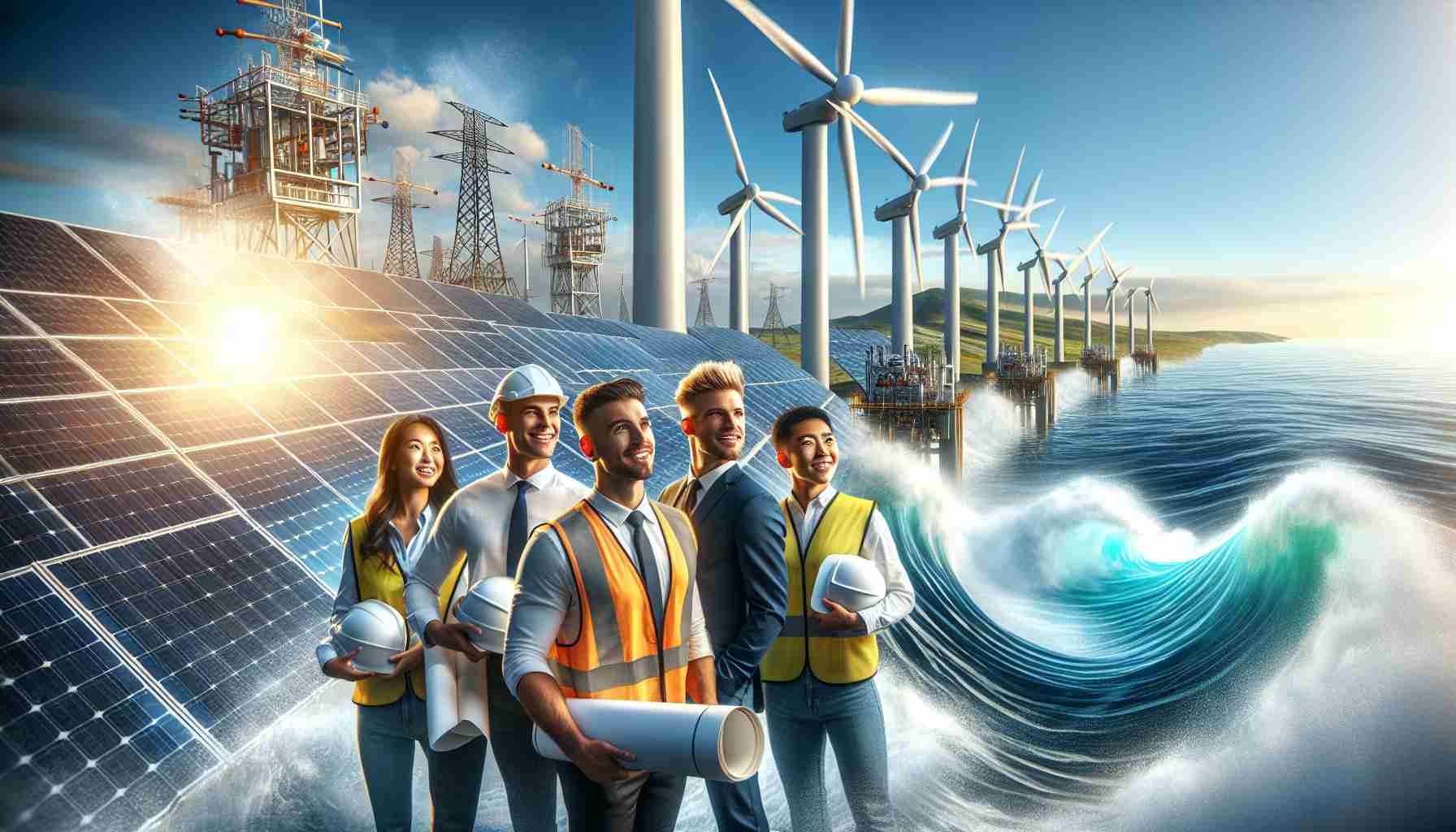A groundbreaking project set to revolutionize the renewable energy industry is on the horizon and is anticipated to be fully operational by the third quarter of 2026. This initiative aims to produce a staggering 1,986 GWh of electricity annually, a quantity equivalent to powering approximately 570,000 households each year. Once operational, it is estimated to offset a substantial 320,000 tons of CO2 emissions annually, aligning with national renewable energy targets outlined in the PNIEC-23, and driving forward the nation’s energy transition and decarbonization efforts.
The project has been hailed as a significant catalyst for the domestic wind industry, with a major portion of the required components and services to deploy the wind turbines being locally supplied by various providers. Notably, agreements exceeding €700 million have been secured by Copenhagen Infrastructure Partners (CIP) with GE Vernova, a key player in Spain, for the delivery, installation, and commissioning of 125 wind turbines.
Manufacturing of the turbine blades for the 125 units will take place at the Les Coves de Vinromà facility in Castellón. Furthermore, a comprehensive 15-year service contract is encompassed within the arrangement. Additionally, the wind turbine towers will be crafted in Spanish factories located in Albacete, Burgos, and Galicia, reinforcing the project’s commitment to local sourcing and production.
The construction of power transformers for the project will also bolster local industry, with Hitachi Energy set to manufacture key transformers in Spain. Specifically, the larger autotransformers, with power ratings of 315 MVA and 680 MVA at 400 kV for grid interconnections, will be produced at Hitachi Energy’s Córdoba plant in Spain.
Commenting on the project, CIP’s partner Nischal Agarwal expressed his satisfaction and anticipation for the commencement of the Teruel Project, Maestrazgo Cluster. Recognized as pivotal in Spain’s decarbonization objectives, the initiative is poised to generate substantial socioeconomic benefits through job creation and economic growth in Aragón and Valencia, as well as enhancing the value chain of the Spanish wind industry.
Exciting New Developments Reshape Renewable Energy Landscape
In the realm of renewable energy, groundbreaking projects continue to emerge, propelling the industry towards a more sustainable future. While the Teruel Project, Maestrazgo Cluster has garnered significant attention for its ambitious goals, a wave of other innovative initiatives is reshaping the renewable energy landscape worldwide.
What are some new technological advancements shaping the renewable energy sector?
Recent advancements in energy storage technologies have played a crucial role in enhancing the efficiency and reliability of renewable energy sources. Grid-scale battery storage systems, coupled with smart grid solutions, are enabling better integration of fluctuating renewable energy generation into the power grid, thereby addressing one of the key challenges of intermittent energy supply.
What key challenges persist in the adoption of renewable energy?
Despite the rapid growth of renewable energy installations globally, challenges remain in terms of grid integration, energy storage, and regulatory frameworks. The intermittent nature of renewable sources such as wind and solar power necessitates the development of robust storage solutions to ensure continuous power supply, especially during periods of low generation.
What are the advantages and disadvantages of large-scale renewable energy projects?
Large-scale renewable energy projects offer the advantage of significant carbon emissions reductions, contributing to climate change mitigation efforts. Moreover, they create employment opportunities and stimulate economic growth in the regions where they are developed. However, these projects often face challenges related to land use, environmental impact, and community acceptance, highlighting the importance of careful planning and stakeholder engagement.
Are there controversies associated with the expansion of renewable energy?
The rapid expansion of renewable energy projects has raised concerns about potential environmental impacts, such as habitat disruption, land degradation, and conflicts over resource allocation. Balancing the imperative to transition to cleaner energy sources with the need to protect ecosystems and biodiversity remains a complex challenge that requires thoughtful consideration and proactive mitigation measures.
In conclusion, while the unveiling of mega renewable energy projects like the Teruel Project, Maestrazgo Cluster marks a significant milestone in the transition to sustainable energy systems, the industry must continue to innovate and address a range of challenges to ensure a successful and harmonious integration of renewable energy into the global energy mix.
For more insights into the dynamic landscape of renewable energy, visit Renewable Energy World.
